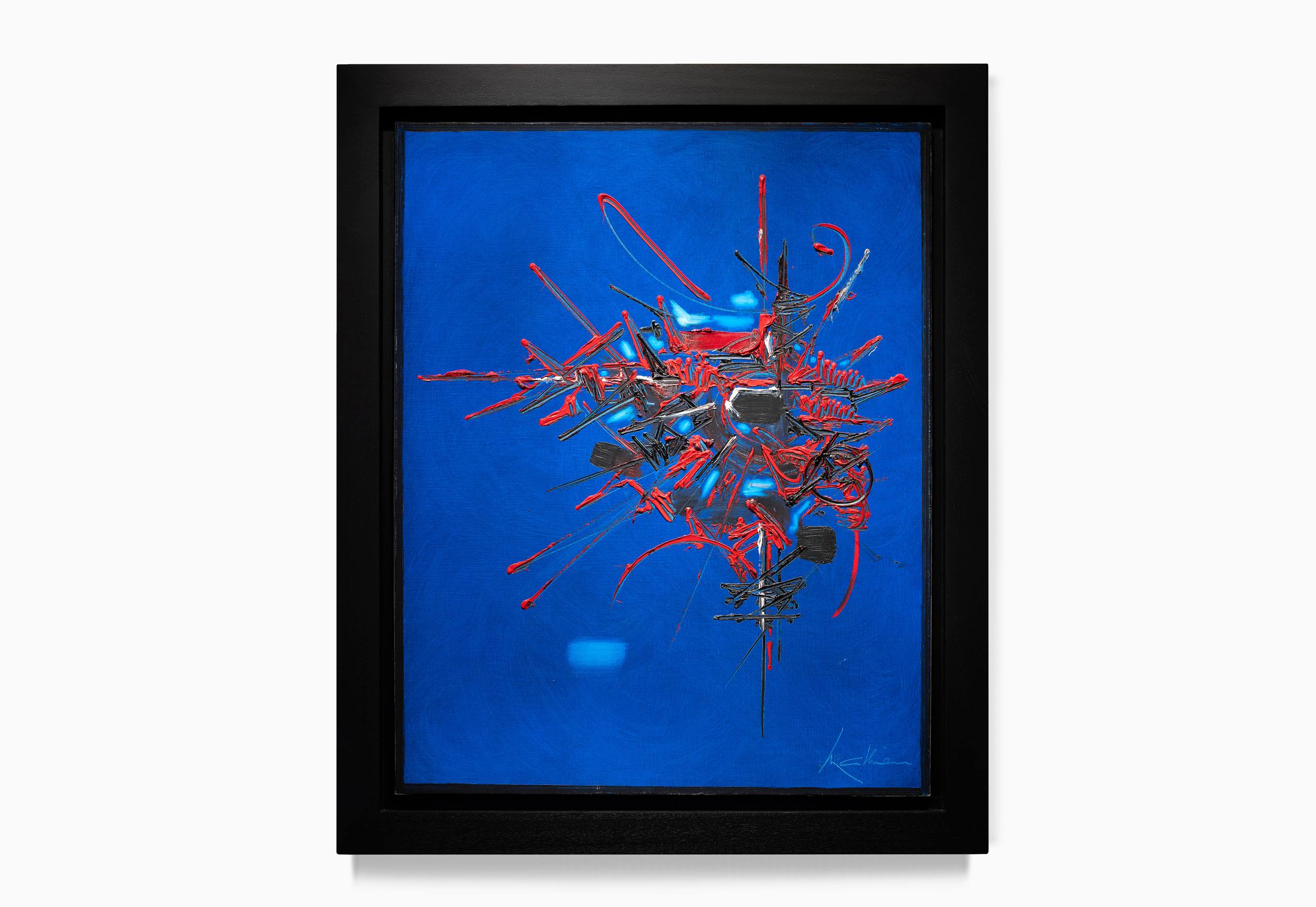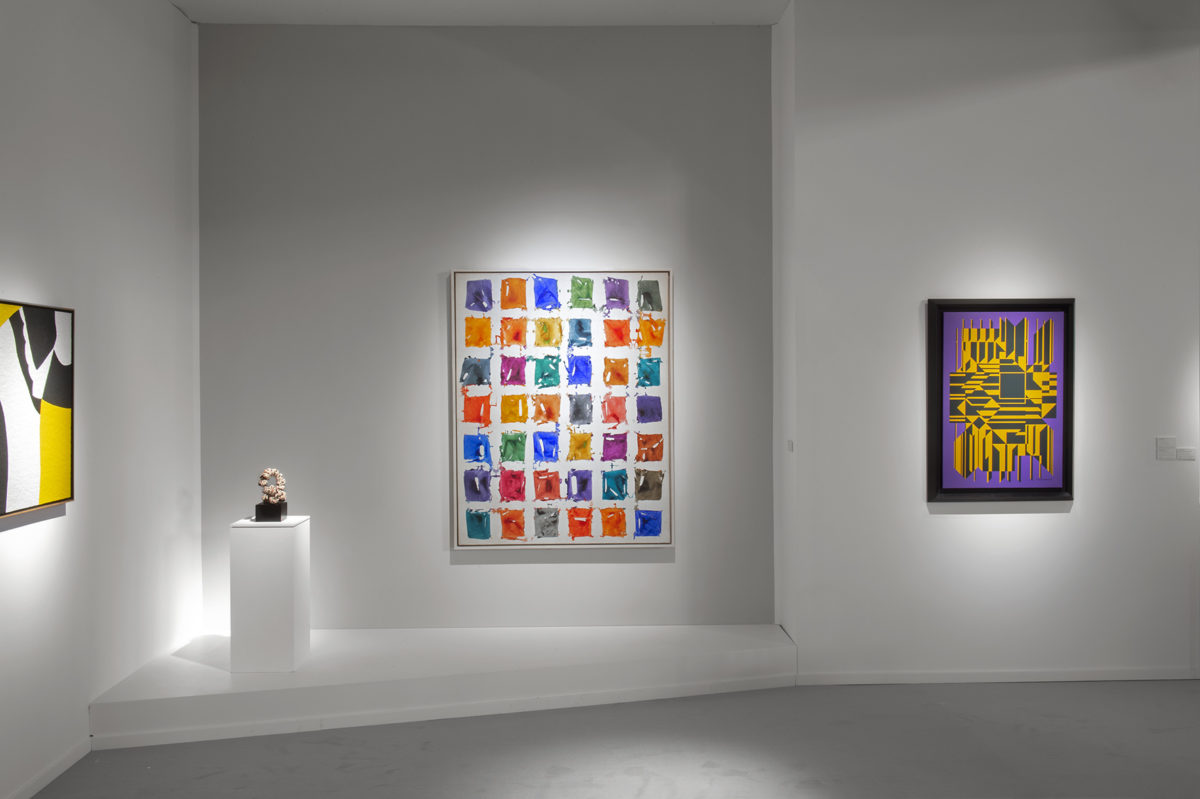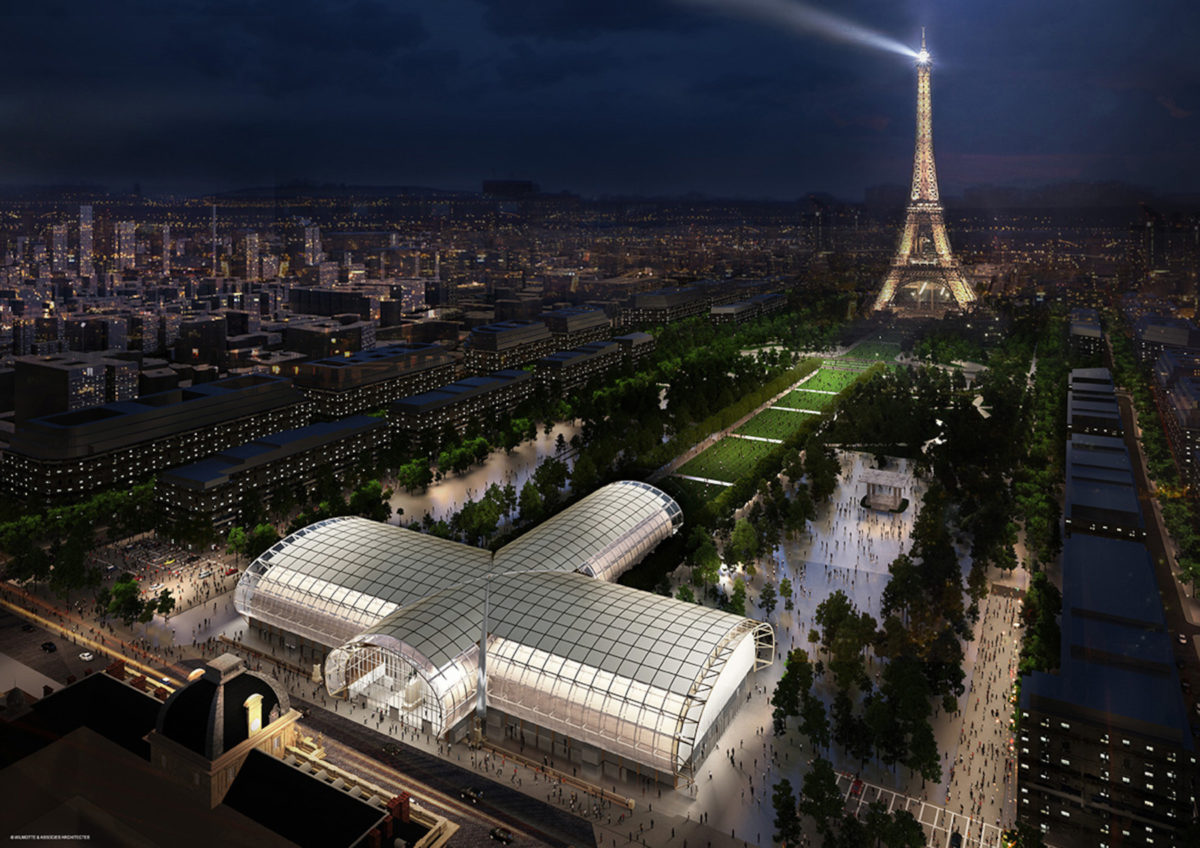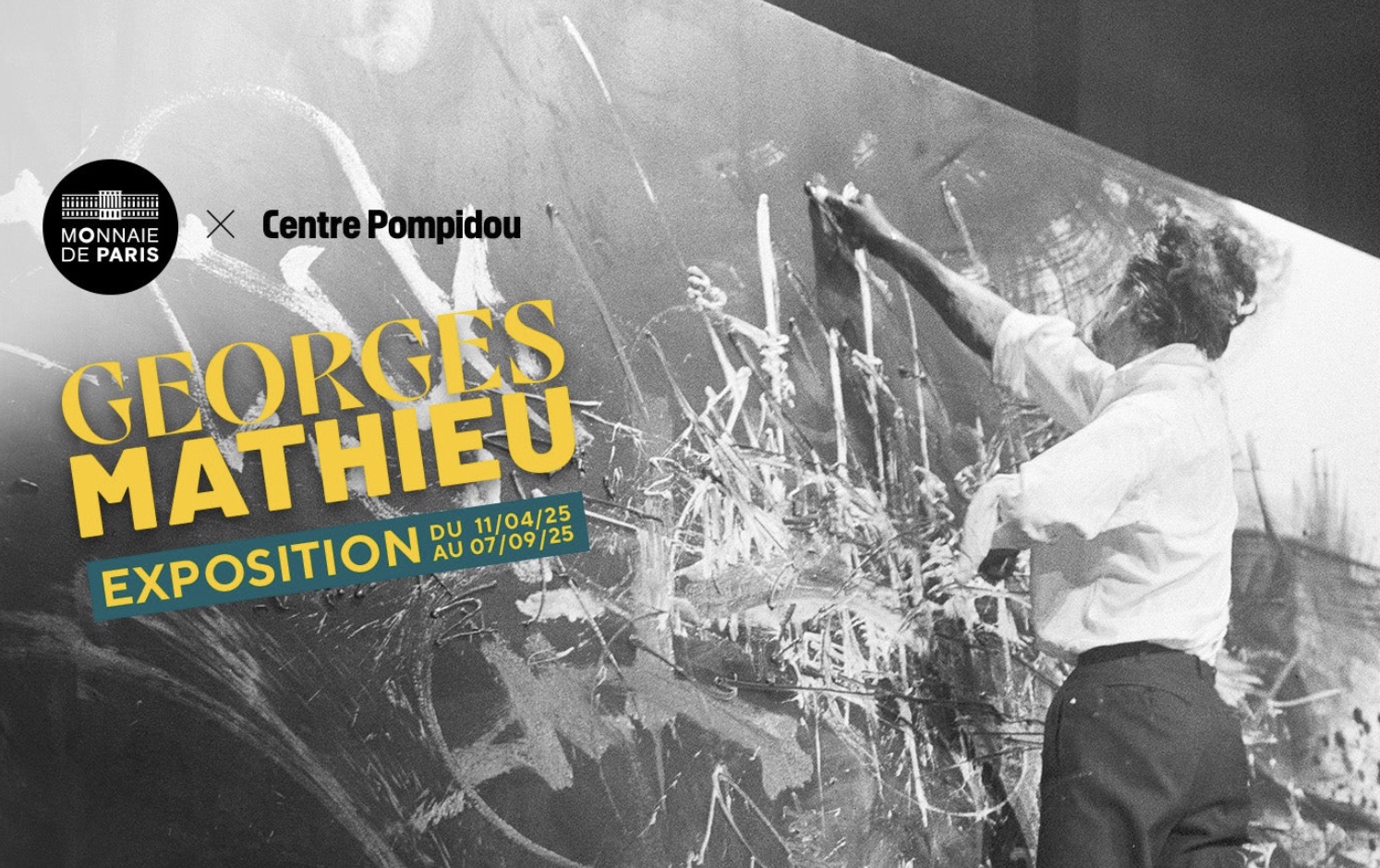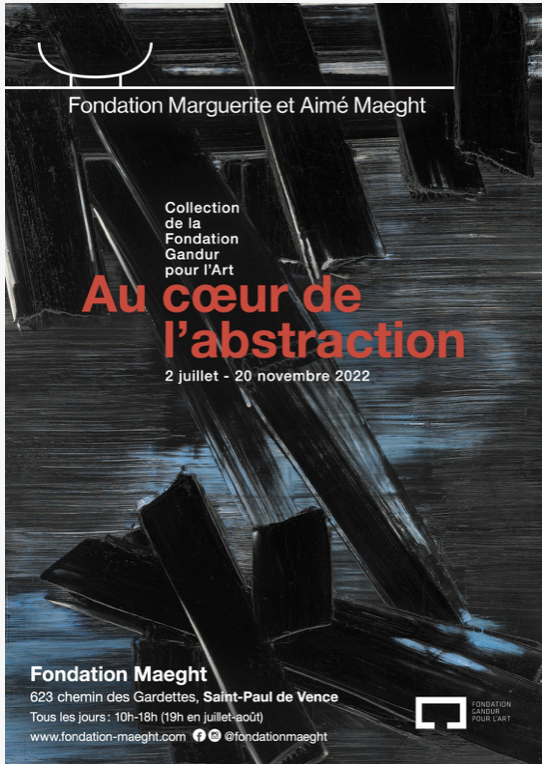From 1944-1945, Georges Mathieu pursued a form of gestural painting. He was the first in France to react violently against geometric abstraction and, in 1947, he organised a series of demonstrations in favour of an art freed from all the constraints and classical habits, which he called Lyrical Abstraction. He exhibited three works at the 1947 Salon des Réalités Nouvelles, declaring, like a manifesto, “Freedom is emptiness.” The same year, he was promoted to become Director of Public Relations of the American company United States Lines (Paris).
He was the creator and one of the main thinkers of Lyrical Abstraction, comparing this approach to that of the supporters of American Action Painting. In 1950, he made his first Tachist paintings and began to give his paintings titles inspired by the history of France. The following year, he studied in Positano (Italy), where he operated a rapprochement between Gestalt theory and Lyrical Abstraction. From 1953 to 1963, he was Editor-in-Chief of the United States Lines Paris Review.
In November 1954, a solo exhibition was organised in Paris, at the Galerie Rive droite, on the theme of the election of Hugues Capet: “Les Capétiens partout.” The eponymous painting was painted in front of Jean Larcade’s castle in Saint-Germain-en-Laye, in 1 hour and 20 minutes. The park contained a collection of monuments, whose historical and aesthetic interest had caught the attention of Georges Mathieu. Les Capétiens partout, hommage rendu au fondateur de la dynastie capétienne, is part of a long series of battles that Georges Mathieu, fascinated by the Middle Ages, began with La Bataille de Bouvines in April of that same year.
Using coloured tubes of paint directly, without preliminary sketching, he painted his canvases freely, thereby taking painting into a new realm. He revealed the process of creation by painting in front of the public, as he did for the magazine Life in relation to . Les Capétiens partout. He juxtaposed signs that have no literal significance, moving away from the artistic practices of the Orientals, despite the affinity that remains. Described by Malraux as a “Western calligrapher”, he discovered the Japanese tradition during a visit to Japan in 1957, where he received a triumphal welcome. He then stayed in the United States, visiting his friends at the universities of Berkeley, Princeton, Yale and the Massachusetts Institute of Technology.
From 1959, retrospectives of his work took place in the museums of Cologne, Basel, Krefeld, Neuchâtel, Geneva…
He then went to Brazil, Argentina, Lebanon, Israel, Canada and almost every country in Europe. From 1962, convinced of the need to create happier harmonies between man and his environment, he became aware of one of the artist’s major duties towards the city and tried to transform his “language” into “style.”
He created new forms of furniture, jewellery, tapestry boxes for the Manufacture Nationale des Gobelins, designed plates for Sèvres, drew the plans for a factory in Fontenay-le-Comte, produced a series of posters for Air France and medals for the Monnaie de Paris, created the new 10-franc coin, stamps, designed projects for grids, fountains and cities.
After more than 150 solo exhibitions worldwide, the most recent of which were held in New York (1979), Montreal (1979), Mannheim (1980), Rio de Janeiro (1982), Bahrain (1982), Tunis (1983), Vascœuil (1983), Morges (1983), Brive (1984), Singapore (1984), Nantes (1985), New York (1985), after four major retrospectives in Antibes (1976), Ostend (1977), the Grand Palais (1978), the Musée de la Poste in Paris (1980), Georges Mathieu undertook monumental sculptures of which the most recent examples are those of the Complexe Sportif de Neuilly (1982), the C.E.S. de Charenton (1982), the Elf-Aquitaine tower at La Défense. He also completed large-format paintings: “La libération de Paris” (1980), “La célébration du Feu” (1981) pour l’E.N.S.C.I. de Limoges, “La délivrance d’Orléans par Jeanne d’Arc” (1982) for the Mairie d’Orléans, “L’Honneur de Brive” for the Mairie de Brive, “Le Massacre des 269” (1985) and the decoration of the ceilings of the Salons de la Mairie de Boulogne-Billancourt (1984-1985).
Georges Mathieu never tired of taking on challenges: in 1985, a real change took place in his work, both in form and in substance. This “cosmic turning point” eliminated the central composition, the last vestige of classicism, in favour of a distribution of forms which invaded the entire surface of the canvas.
After his retrospective at the Palais des Papes d’Avignon, the rhythm of his exhibitions accelerated: Nantes, New York, Geneva (1985), Palm Beach, Luxembourg, Toulouse (1986), Nice, Zurich, Milan, Lyon, Ghent, Montreal, Bologna (1987), Maddaloni, Turin, Rome, Lille, Finale Ligure, Knokke-Ie-Zoute, Paris..
Finally, in the face of the indifference of elected officials and governments with regard to “real” education—an education that would no longer focus on reason at the expense of sensitivity, nor on economic progress at the expense of human progress, which would pave the way for the greatest number to the simplest and most exhilarating joys of life—he launched a heartfelt appeal to the world’s youth in 1964, and continued to exploit every forum and every opportunity to react against the swallowing up of people, their dissolution into collective structures, the resignation of wills and energies, taking up Gailbraith’s cry that “to reduce the risk of social shipwreck, the artist is now called upon to leave his ivory tower to take his position in the control tower of society.” In 1976 he was Administrator of the Société d’encouragement aux métiers d’art but also Member of the Commission for the reform of arts education (Ministry of Education). He took part in the work of the Institut de l’Entreprise.
By revealing that, for the first time in the history of forms, “the sign precedes its meaning,” Mathieu inaugurated a new aesthetics, but also a new ethics and perhaps a new ontology. Indeed, his semantic revolution called into question the foundations of all dialectics, from Plato to Hegel, from Marx to Heidegger, but also the validity of theories and ideologies stemming from a formal structuralism and a literal linguistics that offered only a glimpse of the fragmentary aspect of the universe of signs. Following the example of Lyrical Abstraction, the values of the future civilization will no longer be based on an earlier reality and that is why his adventure asserts itself as the radical condemnation of all the policies currently being conducted around the world.
He died on June 10th 2012 in Boulogne-Billancourt. His work is currently present in at least seventy-nine museums and public collections.


